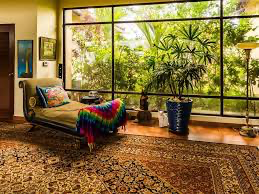As the population ages, more attention is being given to the living spaces of seniors. A safe and comfortable home is crucial for the wellbeing of older people, allowing them to maintain their independence and quality of life. The challenge lies in adapting environments to meet the changing needs that come with aging and balancing safety modifications with the comforts that transform a house into a home. For a closer look at how to create environments that are conducive to senior health and safety, click for more information on senior living solutions.
Key Takeaways:
• Identifying essential modifications to enhance home safety for seniors.
• Recognizing the role of ergonomic furniture and equipment in creating comfortable living spaces.
• Emphasizing the importance of cleanliness and maintenance in preventing health hazards.
Table of Contents:
1. Assessing the Needs of Seniors
2. Adapting the Home Environment
3. Incorporating Safety into the Design
4. Choosing the Right Furniture and Accessories
5. Maintaining a Safe and Clean Space
Assessing the Needs of Seniors
Creating a senior-friendly living space begins with a thorough assessment of individual needs. Each senior has unique abilities, health concerns, and preferences. Physical limitations like impaired mobility, weakened balance, or visual and auditory changes can necessitate specific home modifications. For a fulfilling living experience, the space should allow seniors to safely manage their daily activities while providing the comfort and dignity they are accustomed to.
Adapting the Home Environment
Adaptations to the home are critical in extending seniors’ time to live independently. Solutions such as installing ramps for wheelchair access, creating walk-in showers, and mounting grab bars in bathrooms and hallways are vital modifications. Good lighting and removing tripping hazards, such as loose rugs or unnecessary thresholds, can significantly reduce the risk of falls. These changes can protect seniors from accidents while fostering independence.
Incorporating Safety into the Design
When designing a space for seniors, safety should be at the forefront. Carefully planned designs reduce the risk of accidents and foster an environment that seniors can confidently navigate. Wide passageways, slip-resistant flooring, and well-placed furniture create a secure and welcoming space. Emergency contact systems or wearable devices also provide extra safety, reassuring seniors and their caregivers that help is readily available.
Choosing the Right Furniture and Accessories
Furniture and accessories need to be chosen with care to ensure they meet the needs of a senior’s lifestyle. Couches and chairs should offer support and comfort while being easy to get in and out of. Adjustable beds can aid in restful sleep and ease in getting up. For those with arthritic hands, lever-style doorknobs and faucets can be much easier than traditional styles. These thoughtful selections contribute to both the functionality and comfort of the home.
Maintaining a Safe and Clean Space
A well-maintained home is fundamental to senior safety and wellbeing. It involves regular cleaning, decluttering, and ensuring all safety devices function correctly. Professionals can be enlisted to perform health and safety checks, such as testing for carbon monoxide levels and ensuring the home is free of fall risks. Keeping the home clean also mitigates the risk of infections, respiratory problems, and allergies, forming an essential component of preventive care for seniors.
In conclusion, the creation of a safe and comfortable living space for seniors is a multifaceted endeavor that requires attentiveness, planning, and compassion. It is about balancing the functional alterations needed to protect seniors with the aesthetic qualities that make a house a home. For those seeking expertise and support in this undertaking, resources like the comprehensive guidance found on the AARP website can provide valuable insights. Moreover, the National Institute on Aging website offers additional information on services and care options that enhance the lives of seniors, ensuring their living environments are safe and comfortable. The combination of a well-structured environment, proper furnishings, ongoing maintenance, and reliable safety measures can profoundly impact the lives of senior individuals, offering them a secure and enjoyable living experience well into their golden years.

